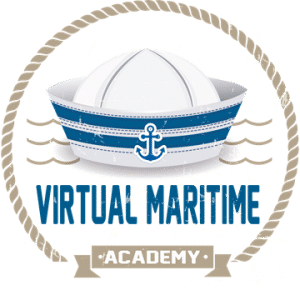Maintaining compliance with maritime security regulations is crucial for the safety and integrity of maritime operations. As the maritime industry continues to evolve, so do the regulations that govern it. From the International Maritime Organization (IMO) standards to various national and regional mandates, ensuring adherence to these regulations is not just a legal obligation—it’s essential for protecting assets, personnel, and the environment. In this article, we will explore how to maintain continuous compliance with maritime security regulations through understanding these regulations, developing a comprehensive compliance management plan, training personnel effectively, and conducting regular audits to guarantee ongoing adherence.
Key Takeaways
- Maritime security regulations are essential for protecting international waters and shipping activities.
- Creating a comprehensive compliance management plan is crucial for effective adherence to regulations.
- Regular training and involvement of personnel enhance awareness and commitment to compliance.
- Conducting regular audits helps identify compliance gaps and areas for improvement.
- Frequent updates to the compliance strategy ensure alignment with evolving maritime security regulations.
Understanding Maritime Security Regulations
Understanding Maritime Security Regulations is crucial for businesses operating within the shipping and maritime industry. These regulations are designed to protect vessels, port facilities, and personnel from emerging threats, including terrorism and piracy. To ensure the safety and security of operations, it’s vital to know how to maintain continuous compliance with maritime security regulations. This involves developing a comprehensive security plan that adheres to the International Ship and Port Facility Security (ISPS) Code, regularly training personnel, conducting risk assessments, and implementing effective monitoring and reporting mechanisms. By staying updated on regulatory changes and fostering a culture of security awareness across your organization, you can mitigate risks and enhance your compliance posture in this highly regulated environment.
Developing a Compliance Management Plan
Developing a compliance management plan is crucial for organizations operating within the maritime sector, especially given the stringent maritime security regulations. To understand how to maintain continuous compliance with maritime security regulations, begin by conducting a thorough risk assessment to identify potential areas of vulnerability. This assessment will provide insight into the specific regulations that apply to your operations. Following this, create a comprehensive compliance framework that outlines the policies, procedures, and responsibilities necessary for meeting these regulatory obligations. Regular training sessions for staff can also enhance awareness and ensure that everyone understands their role in maintaining compliance. Additionally, implementing a monitoring and review system will enable your organization to stay proactive in addressing regulatory changes and internal discrepancies. By establishing these best practices, you can effectively navigate the complexities of maritime security regulations and maintain continuous compliance in this ever-evolving landscape.
Training and Involvement of Personnel
In the intricate world of maritime operations, training and involvement of personnel are pivotal in how to maintain continuous compliance with maritime security regulations. Regular training sessions not only ensure that staff understand the latest regulatory updates, but they also foster a culture of awareness and vigilance. By engaging crew members in simulations and real-world scenarios, organizations can enhance their understanding of security protocols, risk assessment, and incident response. Furthermore, involving employees in compliance discussions empowers them to take ownership of security measures, promoting accountability and diligence across all levels. As maritime security regulations continually evolve, sustained personnel involvement is crucial in upholding compliance and safeguarding assets at sea.
Regular Audits and Updates for Compliance Maintenance
Maintaining continuous compliance with maritime security regulations is essential to ensure the safety of vessels and ports, as well as to adhere to legal requirements. To achieve this, organizations should implement regular audits and updates. Conducting scheduled audits helps identify gaps in compliance and areas for improvement, ensuring that all security measures are effective and up to date. Additionally, keeping abreast of changes in maritime security regulations is crucial; organizations should establish a process for regularly reviewing and updating their compliance policies. This proactive approach not only mitigates risks but also reinforces the organization’s commitment to security, ultimately fostering trust with stakeholders and regulatory bodies. By integrating regular audits and timely updates, organizations can effectively navigate the complexities of maritime security regulations and maintain a robust compliance framework.







